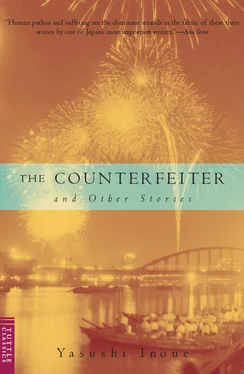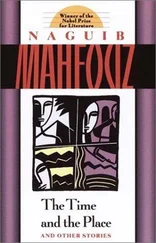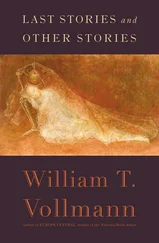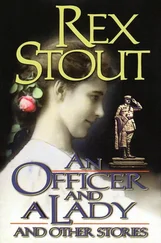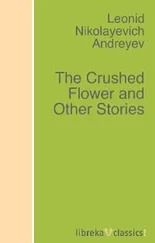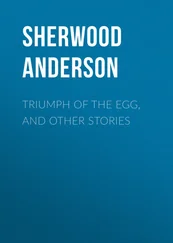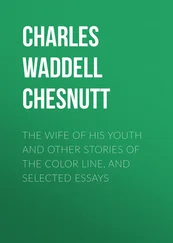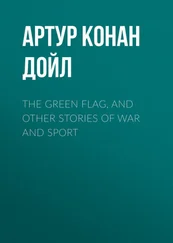Yasushi Inoue - Counterfeiter and Other Stories
Здесь есть возможность читать онлайн «Yasushi Inoue - Counterfeiter and Other Stories» весь текст электронной книги совершенно бесплатно (целиком полную версию без сокращений). В некоторых случаях можно слушать аудио, скачать через торрент в формате fb2 и присутствует краткое содержание. Год выпуска: 2000, Издательство: Tuttle Publishing, Жанр: Классическая проза, на английском языке. Описание произведения, (предисловие) а так же отзывы посетителей доступны на портале библиотеки ЛибКат.
- Название:Counterfeiter and Other Stories
- Автор:
- Издательство:Tuttle Publishing
- Жанр:
- Год:2000
- ISBN:нет данных
- Рейтинг книги:5 / 5. Голосов: 1
-
Избранное:Добавить в избранное
- Отзывы:
-
Ваша оценка:
- 100
- 1
- 2
- 3
- 4
- 5
Counterfeiter and Other Stories: краткое содержание, описание и аннотация
Предлагаем к чтению аннотацию, описание, краткое содержание или предисловие (зависит от того, что написал сам автор книги «Counterfeiter and Other Stories»). Если вы не нашли необходимую информацию о книге — напишите в комментариях, мы постараемся отыскать её.
Counterfeiter and Other Stories — читать онлайн бесплатно полную книгу (весь текст) целиком
Ниже представлен текст книги, разбитый по страницам. Система сохранения места последней прочитанной страницы, позволяет с удобством читать онлайн бесплатно книгу «Counterfeiter and Other Stories», без необходимости каждый раз заново искать на чём Вы остановились. Поставьте закладку, и сможете в любой момент перейти на страницу, на которой закончили чтение.
Интервал:
Закладка:
At any rate, the fact is that before he died in 1940, Hosen spent almost ten years of his lonely life in this hamlet. For about the last three years, however, because he had made a small fortune, the villagers rarely saw him produce fireworks. Usually, he was just on the porch, sometimes just sitting there, sometimes sleeping, mostly just doing nothing but gazing abstractedly ahead. Still, in the summer, when he was asked to do so by the neighborhood youths, he would make a few fireworks and accept the small gratuities they offered him. Moreover, if he was badgered into it, he would wrap up some of the fireworks he had made and go himself to shoot them off in the neighboring villages at the summer festivals. As a result, it appears that he was regarded more affectionately as "Uncle Hosen" by the people in other villages than by those in this one.
Hosen's death came suddenly. Early one morning when the autumn rain had been pouring down continuously, his next door neighbor, who actually lived a full block away, became curious about the fact that "Uncle Hosen" had not shown up for two or three days, so he went over to visit him. Hosen was lying on his face in the doma , dead. When the neighbor tried touching him, it was obvious from the rigidity and coldness of the dead body that many hours had passed since his death. The cause of Hosen Hara's death was apoplexy.
An interesting thing in connection with Hosen's passing away was that just prior to his death he apparently had been intending to work with his paintbrushes. This could be deduced from the fact that in the storeroom there was a blanket, folded in two, on top of which a number of dishes for mixing paint had been arranged in order. Beside them, five paintbrushes had been placed with their necks neatly lined up on the cover of an inkstone case. Right in the middle of the blanket, a sheet of brand new white paper on which nothing had been painted was spread out just as neatly. It was thought that he had been just intending to take up his brush when he remembered something he had to attend to, had stepped down into the doma , and had passed away there just like that.
"Was Hosen-san painting pictures in his later years?'' I asked Senzo Onoe.
"I don't think he was painting any more. But he was a painter at heart, so I guess it must have been on his mind, even when he had a hunch that he was going to die. Some people might say that he was going to paint, but he was missing three fingers, so it wouldn't have been easy to paint anything worth mentioning," he replied.
That was the last of the counterfeiter, but there was something in that story that struck me. Onoe had said that drawing paper without a single brush stroke on it had been spread out and ready, but I had the feeling that he really had no intention of painting a picture at that time. I felt rather that he only wanted to surround himself with his painting gear.
I listened to this tale of Hosen Hara to the end, and when I got up to leave, Senzo Onoe said, as though he had suddenly remembered something, "By the way, inside a cabinet in the storeroom of your house there are some things Uncle Hosen wrote. I think there's something he wrote about fireworks. Those things were found at the time of his funeral, and some of the young boys must have thought they might be of use some day and stored them in the Assembly Hall."
There was one cabinet in the storeroom of the house I had rented which we had not touched and had left alone as promised when I had leased the house. I didn't know what was in it but had guessed that it must contain things that were owned jointly by the young people of the village.
On returning home, I opened that cabinet. An account book of festival receipts, minutes of a youth conference, drafts of speeches — trash of that sort was crammed into it. In among these things, I discovered a notebook of bound Japanese rice-paper with the words Outline of Procedures Governing the Manufacture of Pyrotechnics skillfully written, by brush of course, on the cover. The title was pretentious, but these things appeared to be something like memoranda which Hosen Hara had written himself on the making of fireworks. When I opened up the notebook and looked at a page, there was a heading, "Fog Blooms; Red Fog; Snowfall," with this formula underneath:
"In order to make stars, prepare a saffron core and set it aside to dry; then add clay to chrysanthemum powder,* mix with water, add 1 magnesium, and stir in a mortar; wrap the resulting paste around the core in layers; after the core is well covered with the paste, sprinkle with a mixture made from 15 oz. of chrysanthemum and 1½ oz. of seed.** Roll the ball well and repeat this process several times. When it gets to be four or five inches, add a booster. Be sure to dry the ball in the sun after each application. Cores of 5¾ inches and 7½ inches can be used."
Very unclear passages like this covered three pages. Then followed paragraphs on combinations of saffron and combinations of chrysanthemum. Proportions for each kind of explosive were written by brush in red. Then followed sections on the manufacture of "Roman Candles," "Floral Cores," "Firetails," etc. Of course these were Hosen's memoranda to himself, but to me, who had absolutely no knowledge of fireworks, they were completely incomprehensible. There was a sheet of Japanese rice-paper stuffed between one set of interleaves. I opened it and looked at it. It was Hosen's own curriculum vitae , a personal statement of interest to me for very special reasons.
"Born: October 3, 1874; Senjiro (pen-name: Hosen) Hara," was written at the beginning, so there was no question that this was Hosen's own curriculum vitae . However, his record of employment, which can only be regarded as fictitious, was listed simply in this sketchy fashion:
"1916, Arareya Fireworks Store, Tokyo
1918, Suzuki Fireworks Store, Yokosuka
1921, In Charge of the Oriental Pyrotechnical Factory
1922, Sakai Fireworks Display Store, Osaka
1924, In Charge of the Marudama Pyrotechnics Factory, Osaka"
At the end, there was an ostentatious subscript: "The foregoing is certified as factual."
It is not clear where, when, or to whom he intended to submit this. This much, however, is clear: the period from 1912 to 1926 was precisely the time he was dispensing Keigaku forgeries as he moved around in the small cities and towns of Hyogo and Okayama Prefectures. It is therefore also clear that this was a wholly fabricated statement of his personal history. The possibility exists that when Hosen reached an impasse trying to earn a living as a counterfeiter or as a village artist, he might have been a technician in charge of a fireworks factory at one or another country town — on the side. If you want to stretch your imagination even further, you could even say that when he was ordered to appear at the police station, he was possibly able to settle the matter very quickly by just producing this false document and wrapping the police up in smoke. In any case, there is no doubt that this document clearly reveals a characteristic part of the nature of the person that was Hosen Hara.
IV
"I DON'T know whether you know it or not, but making fireworks in the winter can be very unpleasant. Chilean nitrate can be awfully cold when it's cold." As she said this, Hosen Hara's widow looked at the palm of her right hand as if she were recalling the chapped hands she had in those days. Then she dropped her gaze.
My talk with her took place at the end of November, the year the war ended.
Although the war had ended, life in the city was still shrouded in great post-war confusion and anxiety, and almost every day newspaper articles were reporting on the gangs of robbers, so I kept my family at their evacuation site where they were. I had intended in any case to have them spend the rest of the year there. The seasons changed in that mountain village as much as a month earlier than in other places, and toward the end of September, piercing blasts from the bleak and dismal autumn winds came whistling incessantly up the slopes of the mountain range, producing terrific drafts which blew all the way from Mimasaku to Hoki. At the beginning of October, the continual late-autumnal rains that are characteristic of the highlands arrived as the first harbingers of winter.
Читать дальшеИнтервал:
Закладка:
Похожие книги на «Counterfeiter and Other Stories»
Представляем Вашему вниманию похожие книги на «Counterfeiter and Other Stories» списком для выбора. Мы отобрали схожую по названию и смыслу литературу в надежде предоставить читателям больше вариантов отыскать новые, интересные, ещё непрочитанные произведения.
Обсуждение, отзывы о книге «Counterfeiter and Other Stories» и просто собственные мнения читателей. Оставьте ваши комментарии, напишите, что Вы думаете о произведении, его смысле или главных героях. Укажите что конкретно понравилось, а что нет, и почему Вы так считаете.
